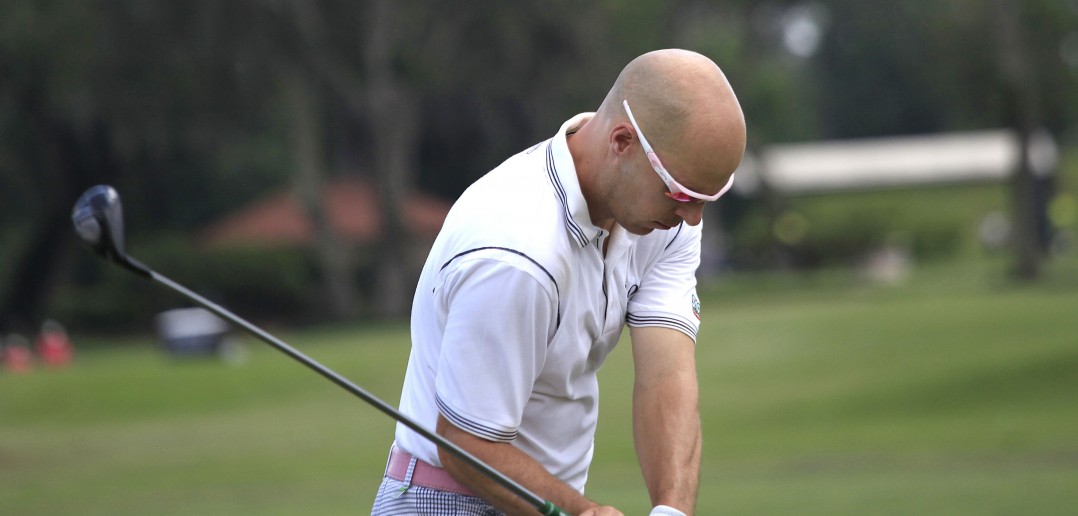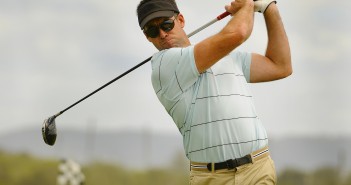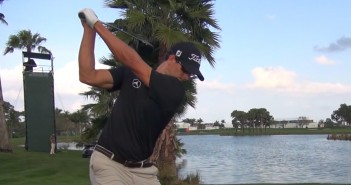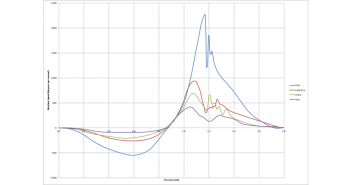One of the greatest misunderstandings of the average golfer, and sometimes even elite players and coaches, is that speed and power in the golf swing are predominantly generated by the arms and shoulders.
This misunderstanding is widely held because golfers and teachers were, until very recently, only able to identify what their eyes were able to see. The golf swing happens very quickly, and the only things the golfer and instructor can identify clearly are the arm movement and the planes created by the arms and the golf club.
In recent years, biomechanical science, in conjunction with the latest equipment such as super high speed video cameras, electromyography (EMG), force plates, launch monitors such as TrackMan, and 3D motion capture such as AMM (all of which are used by Golf Loopy), have enabled us to measure and analyse the forces and movements within the golf swing accurately and scientifically. In just the last few years we’ve learned more about the golf swing than was ever known before.
We now know for a fact that, while the arms and shoulders obviously have a very important role in the transmission of power to the golf club, they are actually a minor power contributor towards the end of a kinetic chain that starts at the ground.
Trying to generate speed with their arms and shoulders causes many of the swing faults suffered by amateur golfers.
Also, using your arms to generate power will cause you to rotate predominately through the joints in your lower back, with minimal rotation actually occurring at your hip joint. This lower-back-centred movement is especially stressful on your spine and supporting muscles. The wear and tear eventually will lead to pain and possible injury.
Golf Loopy will teach you how to move your body most effectively in the golf swing, by using the large muscles in your legs and core for maximum power, accuracy, consistency and safety.
If you have any questions or comments about this or other articles on Golf Loopy, please send us an email.
You May Also Like…
Golf Swing Sequence and Timing which describes the ideal biomechanical sequence of the golf swing.
Golf Swing Sequence and Timing – Common Faults, which gives a comparison of the kinematic sequence for typical amateurs and Tour Pros, showing the common flaws that may plague your own golf swing.
Golf Lag and the Compound Pendulum, which describes how you can use physics to generate more speed, accuracy and consistency in your golf swing, with less effort and less strain on your body.
Introduction to the Swing like a Champion System
Overview of a Great Golf Swing, which summarises the correct movements in a great golf swing, and describes how the core muscles help to power and stabilise the golf swing.
Why is Having the Shoulders “Connected” So Important? Which explains how the shoulders enable the power of the big muscles in your legs and core to be transferred to the golf club.
The Role of the Right Arm in the Golf Downswing, which describes how the right arm transfers energy to the golf club in the downswing.
Golf Anatomy and Kinesiology, a collection of articles describing the roles of the muscles involved in the golf swing.
The Role of the Deltoids in the Golf Swing.
Core muscles, which describes the muscles that run the length of your trunk and torso.
Gluteal muscles, which describes the “glutes” — the three muscles that make up the buttocks, and how they power the golf swing kinetic chain through the core.
Kinetic Chain, which describes how the different parts of your body act to transfer energy from the ground to the golf ball.
Triceps brachii muscle, which describes the role of the triceps in the golf swing.




